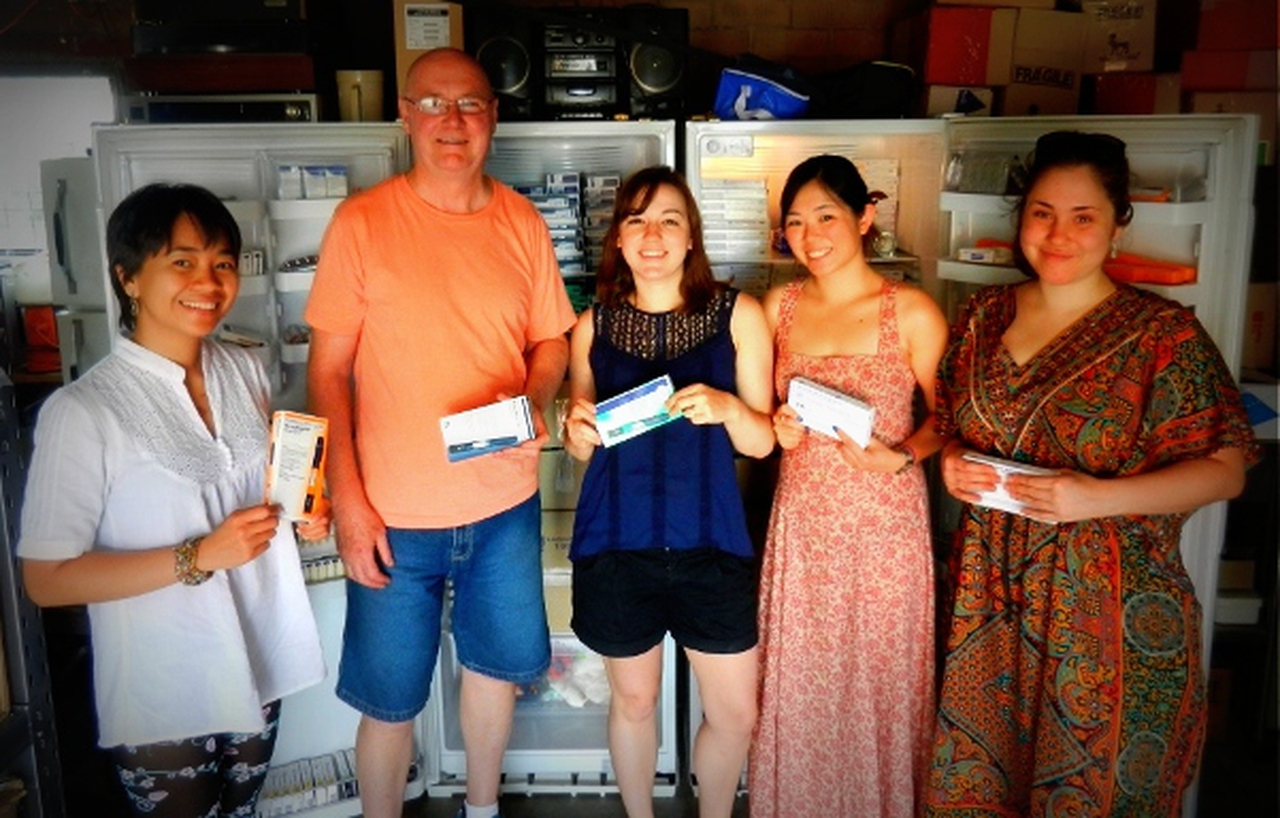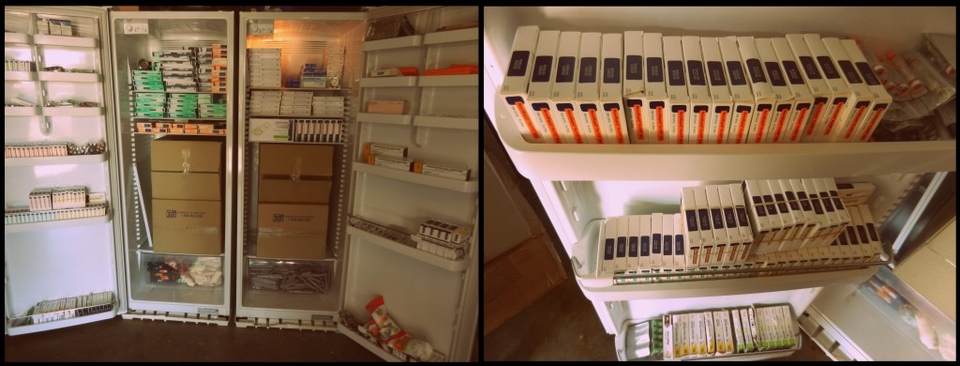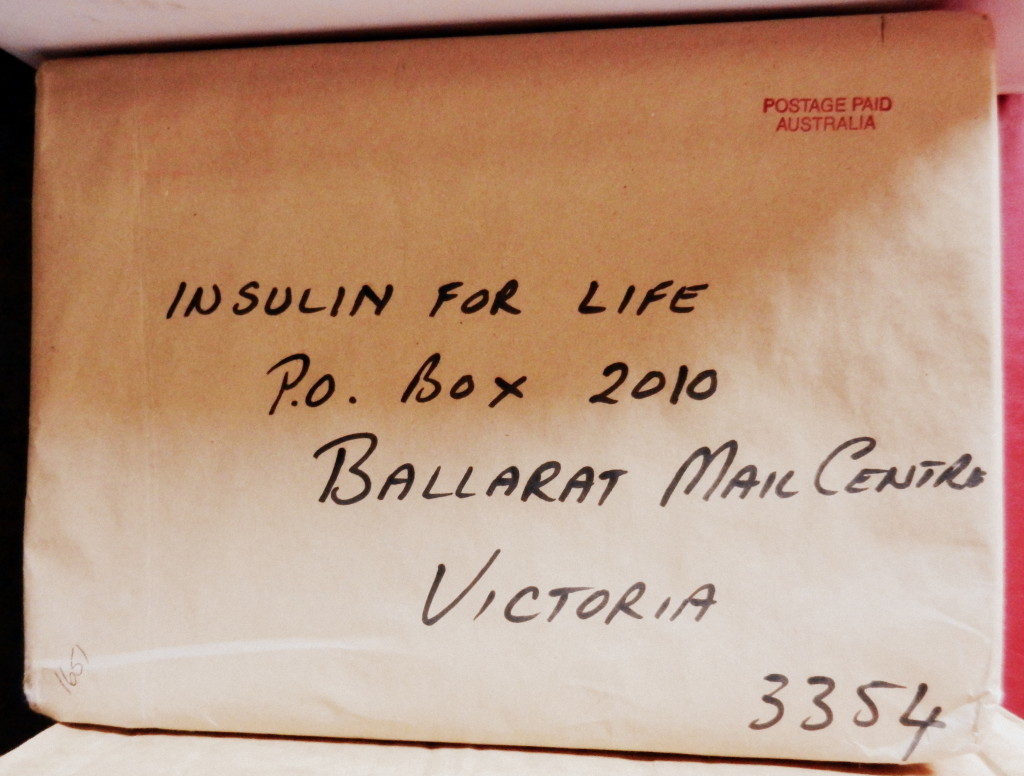
Behind the Scenes with Insulin for Life
22 Dec 2013, 4:19 p.m. in Global Stories by Elizabeth Pfiester
Back in August I interviewed Tali and Ron Rabb from Insulin for Life (IFL) Australia and Global. I was so excited to be able to meet the people behind the wonderful organization when I visited Melbourne in December for the Young Leaders training and World Diabetes Congress. Insulin for Life collects in-date, unopened insulin and test strips and sends the otherwise wasted supplies to people in places around the world that cannot access or afford them. IFL even sent some insulin home with some of the Young Leaders who come from places where accessing insulin is a problem.
Excitingly, I didn’t just get to meet Insulin for Life, but Tali and Juvy (another IFL partner) were kind enough to facilitate a visit to Ballarat (a town just outside Melbourne) for myself and another Young Leader, Ashley. Ballarat is the home of Neil Donelan and the main collection and distribution centre for Insulin for Life Australia.
Neil isn't diabetic, but many years ago he saw the need for such an organization and was one of the ‘founding fathers’ of Insulin for Life. Since that time he has spent A LOT of his own time sorting through the donations and ensuring that insulin and other supplies get mailed to contacts and medical personnel in the countries that Insulin for Life supports. He was kind enough to show us the ropes and tell us a few of his stories about the impact of Insulin for Life and some of the struggles that come with an operation like IFL.
One of the great things about Insulin for Life is that it utilizes goods that would otherwise be wasted. Neil explained that before IFL existed, all of the supplies that are now being sent abroad were costing the government money because they had to be sent to a sterile facility to be destroyed. It is estimated that approximately 10 million vials of insulin are produced each year but 1 million of those goes to waste, so think of the possibilities and room for growth for more IFL centres!

Neil said that in addition to the much needed insulin, he’s gotten some interesting donations over the years – like boots and other non-diabetes materials. He mentioned that so many meters have been donated, but they are not so useful without the strips to go with them. If you have any unused, in-date strips that would go with these meters, please consider mailing them to Insulin for Life so that these meters can be put to good use.
Neil also explained that the fact the above fridges were full was actually not a good image. He explained that if the fridges were full, the insulin was not being put to its best use and not saving lives. The emptier the fridges, the more people receiving insulin!
Because the International Diabetes Federation does not have great capacity to help people with diabetes in emergencies, they work closely with IFL because Insulin for Life can get insulin into countries very quickly after an emergency. For example, IFL supported the Philippines after the recent typhoon and Neil said that in the best cases, insulin can arrive in countries within four days!
I asked Neil about the logistics of mailing all of the insulin. He said that studies show that insulin left unrefrigerated for 7-10 days will not be damaged, so IFL doesn’t spend money to send the insulin in cool packs but sends it more directly and quickly by airmail. He also mentioned that information from several studies shows that insulin doesn’t really go out of date (it loses potency very slowly) but legally Insulin for Life cannot send out-of-date insulin to countries so if people mail expired insulin, it still goes to waste.
Sadly, other logistical problems can occur with shipments because larger boxes need a notary and loads of various paperwork in order to get to where they need to be. If a box is too heavy when it arrives in a country and the costs have not been paid for it by the person sending, it will be sent back and the entire box will likely go to waste if the insulin is nearly out-of-date. Corruption is also an issue, so bribes to get insulin through customs are not uncommon. It is a hard reality that it can be such a trial to get a live-saving medicine to those who need it. Obviously these issues can cause major frustrations, but the work that Insulin for Life does, thanks to Neil and the others – and everyone who donates – is totally worth it. So many lives have been saved through the programme and as it grows, more people can be helped through less waste.
 Want to donate your extra insulin, strips, or supplies? Visit www.insulinforlife.org to read about the specifics and see how you can make the most impact. There may even be a collection centre near you, so have a look and don’t let that life-saving insulin go to waste! The Australian address for sending supplies is shown here.
Want to donate your extra insulin, strips, or supplies? Visit www.insulinforlife.org to read about the specifics and see how you can make the most impact. There may even be a collection centre near you, so have a look and don’t let that life-saving insulin go to waste! The Australian address for sending supplies is shown here.
Even if you don’t have unused supplies, you can help Insulin for Life with the daunting postage costs by making a donation online. A charitable one-off donation for the holidays will go a long way to saving lives, but you can also set up a regular donation online.
Feel free to get in touch if you are interested in collecting and distributing supplies in your own country. If a centre doesn't exist there may be an opportunity to start a new one and salvage lots of wasted insulin. Thanks again to Neil, Tali and Juvy for allowing us to visit and learn more about what goes on behind the scenes for Insulin for Life.



